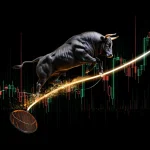
ADHD analysis paralysis: A Deep Dive into Core Economic Factors
Apr 10, 2025
WARNING: Fear-driven herd mentality is the most destructive force in financial markets. It is not the precise strike of economic hardship nor the cold calculation of declining profits that brings ruin; it is the savage stampede of frightened investors blindly following one another into oblivion. Markets do not merely collapse—they implode spectacularly when panic overtakes reason, a cascading devastation fueled not by external threats alone but by our own primal instincts, cognitive biases, and collective anxieties. To understand and conquer ADHD analysis paralysis in economic decision-making, we must first grasp that the greatest enemy of wealth creation is internal: it is fear itself.
Exposing Market Panic: Psychology Behind the Crash
Human psychology is the battlefield upon which markets rise or fall. When uncertainty arises, rational analysis often gives way to emotional contagion. Consider the Great Crash of 1929, a glaring historical testament to herd-driven catastrophe. Initially, economic fundamentals were sound—but investor psychology was fragile. Rumors spread like wildfire, igniting fear. Investors, driven by recency bias and loss aversion, desperately rushed to liquidate positions, triggering a self-fulfilling prophecy. Trillions evaporated, not due to economic realities but because panic fed upon itself, amplifying irrationality in an economic death spiral.
The dot-com bubble burst in 2000 provides another vivid illustration. Rational valuations had long been abandoned, replaced by exuberant hope and greed. When the market finally faltered, fear superseded greed in milliseconds. Investors, paralyzed by indecision and gripped by herd instinct, failed to reassess calmly. They watched helplessly as their portfolios unraveled. Herein lies the paradox: markets are simultaneously rational and irrational. They reflect collective intelligence, yet succumb to collective folly. This nonlinear dynamic—this emergent property of market psychology—is where ADHD analysis paralysis thrives, crippling clear thought and decisive action.
Contrarian Mastery: Embracing Fear to Create Wealth
Yet, within chaos lies immense opportunity. Great contrarian investors like Warren Buffett, Charlie Munger, and Jesse Livermore have long understood that peak fear signals peak opportunity. Buffett famously advises: “Be fearful when others are greedy and greedy when others are fearful.” This seemingly paradoxical guidance is backed by empirical results. When markets descend into panic, asset prices often detach dramatically from intrinsic values, presenting rare windows of opportunity for those bold enough—and disciplined enough—to act decisively.
Jesse Livermore, the legendary speculator, meticulously exploited market panics. During the Panic of 1907, while others succumbed to despair, Livermore recognized the psychological divergence between perception and reality. He observed that fear-induced sell-offs created exaggerated price movements, ripe for exploitation. By calmly assessing underlying fundamentals and ignoring emotional contagion, Livermore turned market panic into enormous profits. Similarly, during the 2008 Financial Crisis, Buffett deployed vast reserves of cash at precisely the moment fear peaked, acquiring stakes in Goldman Sachs and Bank of America at exceptionally favorable terms. These bold moves, executed against mass sentiment, yielded staggering returns, underscoring the immense rewards awaiting those who master contrarian discipline.
Fear-Exploiting Strategies: Selling Volatility for Profit
Mastering ADHD analysis paralysis requires strategies designed explicitly to leverage panic-driven volatility. One such powerful method is strategically selling put options during volatility spikes. When markets panic, implied volatility—the market’s expectation of future price fluctuations—soars dramatically. This spike inflates option premiums far beyond typical levels. By selling puts at these moments, investors collect significantly higher premiums, capitalizing directly upon widespread fear.
Consider a concrete example: during the March 2020 COVID-induced market crash, implied volatility reached historically high levels. Investors who recognized this psychological distortion sold put options on robust companies—such as Apple, Microsoft, and Amazon—at elevated premiums. As panic subsided, volatility normalized, and these options rapidly decayed in value, allowing sellers to buy them back cheaply or simply let them expire worthless, pocketing substantial profits. Moreover, savvy investors reinvested collected premiums into long-term equity anticipation securities (LEAPS)—long-dated call options—leveraging their profits into future growth. This dual strategy magnifies returns, transforming short-term panic into long-term wealth creation.
Disciplined Boldness: The Antidote to Indecision
However, exploiting fear is not without significant risk. Reckless boldness leads to ruin; disciplined boldness leads to mastery. To overcome ADHD analysis paralysis, investors must meticulously prepare in advance, establishing clear criteria for action long before panic erupts. Rigorous analysis of fundamentals, precise valuation techniques, and a comprehensive understanding of historical volatility patterns are critical prerequisites.
Emotional discipline is equally essential. Investors must cultivate psychological resilience, learning to detach emotionally from short-term losses and volatility swings that cripple less disciplined traders. Techniques rooted in cognitive behavioral psychology—such as maintaining trading journals, conducting scenario analyses, and regularly revisiting long-term strategies—build mental fortitude. The disciplined investor creates structured decision-making frameworks, ensuring clarity amid chaos. This meticulous approach transforms fear-driven indecision into decisive, disciplined action, enabling investors to profit systematically from market anomalies rather than becoming paralyzed victims of herd psychology.
Visionary Empowerment: Escaping the Herd for Personal Freedom
Ultimately, overcoming ADHD analysis paralysis is about more than monetary gain—it is a profound act of intellectual liberation and personal empowerment. Herd mentality not only destroys portfolios; it erodes individual autonomy, reducing intelligent beings into anxious followers. Investors reclaim their autonomy by consciously confronting and mastering fear-driven market dynamics, transforming panic into opportunity.
This visionary empowerment extends beyond finance. It cultivates intellectual independence, critical thinking, and emotional resilience—invaluable qualities across all life facets. Investors who conquer their fear, resist herd impulses, and think independently gain a permanent economic and personal advantage. They become architects of their financial destinies rather than victims of collective irrationality. In mastering market psychology, they master themselves, transcending fear to achieve freedom, power, and lasting success.
The choice is stark and clear: succumb to fear-driven herd mentality and remain trapped in paralysis, indecision, and financial ruin—or embrace disciplined boldness, exploit irrational panic, and achieve visionary empowerment. The path forward demands courage, clarity, and contrarian conviction. The reward—financial freedom and psychological liberation—is worth any price.












